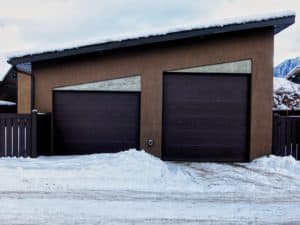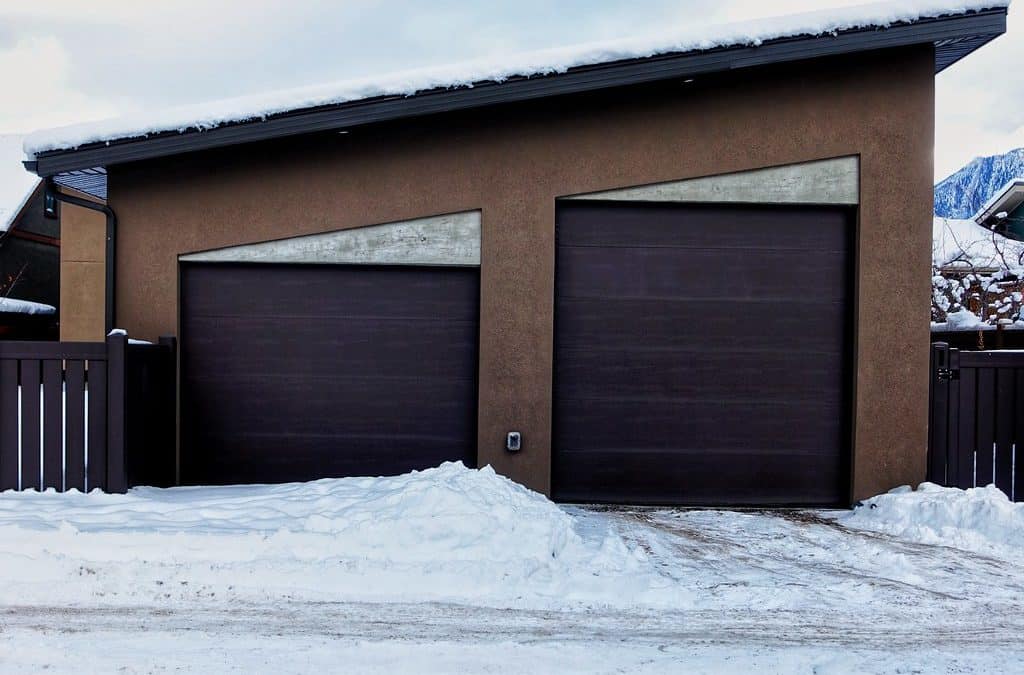During frigid winters, you might keep your car in your garage to protect it from harsh ice, snow, and rain. This strategy also preserves fluids like oil while preventing you from having to scrape snow off your car before you go to work. Unfortunately, the garage door itself can be susceptible to freezing. The door getting stuck at the bottom might make you late for work since you can’t get your car out of the garage. Frozen components could also cause the door to get stuck totally open, leaving your valuables exposed to the elements and thieves.
The good news is that a frozen garage door isn’t anything you can’t handle. Read on to discover the best tips for opening a frozen garage door. Our experts here at Overhead Garage Door are eager to share safe methods that will have you on your way in no time.
Don’t Press the Garage Door Button Repeatedly

Image by Edna Winti is licensed with CC BY 2.0
When you notice that your garage door isn’t opening or closing, your first reaction might be to hit the button repeatedly. This approach is not only ineffective but can also damage the opener and the door, as their metal components have already contracted because of the cold. Overworking the sensitive motor may lead to unnecessary and costly repairs.
Instead, recognize that the garage door might be frozen because of the cold weather outside. After the door doesn’t respond to your initial pressing of the button, implement other measures such as the ones we discuss below to fix the problem.
Check for Other Causes
A cold day might lead you to believe that the weather froze your garage door, but consider checking for other problems first. Identifying a problem with the door system might save you from the work of clearing away ice.
For instance, you can check the wall console’s lock button and the interior slide lock to confirm that the door is unlocked. If it’s not, you can unlock it and press the button again to see if that solves the problem. If the door is already unlocked, do a quick visual inspection of the door system. Look for broken parts or obstructions that might be interfering.
Clear the Ice
If your inspection reveals no problems, go outside to check for ice directly under the bottom of the garage door. Ice contacting the ground and your garage door can prevent the door from lifting when you press the button.
You can use an ice scraper to chip away pieces, but be careful to keep the weather seal at the bottom of the door intact. Remove as much ice as possible and sweep it away from the door. You might also remove the ice by using a blow dryer or heat gun and directing the hot air at the frozen buildup. If your garage has a heater, turn it on to facilitate the melting process.
You can also throw hot water on the ice or apply rock salt, but these two methods have their downfalls. Hot water can quickly melt the ice but might cause more buildup later when the water eventually cools and turns to ice. Rock salt is only useful if you have enough time to let it work its magic. Additionally, remember to clean away the salt after the ice melts to prevent your garage door from corroding.
Manually Open the Door
While hitting the button might open the door after you clear away the ice, you might want to try to open it manually to prevent damage to the system. Start by using the manual release cord to disengage the door from the opener. Then, pull the cord to release the door. Manually opening and shutting the door several times can loosen ice buildup. Refrain from using excessive force, as you might hurt yourself or damage the door.
Take Preventive Measures
While it’s easy to fix a frozen garage door yourself or call Overhead Garage Door for our expert repair service, you’ll ideally want to prevent freezing from happening in the first place. Here are some tips to consider implementing throughout the winter:
- Clear ice away from the door frequently. Though the last thing you feel like doing before or after work is clearing ice away from the door, try to do it frequently. It’ll prevent frozen buildup by leaving room between the bottom seal and the ground.
- Regularly open and close your garage. Even if you’re not leaving your house often, try to open and close your garage door every once in a while. The frequent movement can keep the door unfrozen for when you need it to work most.
- Lubricate the bottom seal. Prevent sticking by applying a lubricant like vegetable oil or silicone to the bottom seal. You can also apply a lubricant specifically for garage doors on other components.
- Avoid starting your car in the garage. While your car generates heat that can melt ice, you shouldn’t let it run with the garage door closed. Other methods are much safer and don’t put you at risk of carbon monoxide poisoning.
- Install a garage heater. In addition to making your garage more comfortable and more suitable for storing items year-round, a heater may prevent your door from sticking to the ground.
- Crack the door. If you can’t clear water and ice away from the bottom of the door, close the door but leave an inch or so of space at the bottom. Cracking the door keeps your belongings safe while preventing sticking.
While this guide has demonstrated that it’s possible to fix a frozen garage door yourself, we strongly recommend enlisting expert help. Our team here at Overhead Garage Door has seen it all and is ready to solve your problem. Give us a call to schedule service. We use safe and effective methods for unfreezing your garage door, and we can fix components that are out of your wheelhouse. Additionally, our team can provide routine maintenance to reduce the chance of this problem occurring in the first place.

